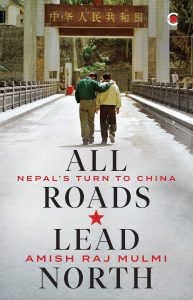
The China-Nepal bonhomie has been a matter of much discussion amongst the Indian policymakers as of late. The blatant interference by the Chinese in Nepalese domestic politics, as seen with the recently concluded constitutional crisis in Nepal, has surprised many observers of the region. The proximity between these two Asian neighbours has grown manifold after India imposed a unilateral blockade on Nepal in 2015. The blockade caused severe distress to the Nepali citizens, who were still struggling to come to terms with the damages caused by the devastating earthquake. This forced the Nepali government to look towards other alternatives, mainly towards their northern neighbour, China. The tilt towards China is expected to bring in a number of development projects in Nepal backed by the Chinese, which would help Nepal reduce its over-reliance on India. What kind of impact China’s assistance will have on the Nepalese economy and society is hotly debated amongst Nepali scholars. However, not a lot of attention has been given to how Nepali citizens are already being impacted by the growing Chinese presence on Nepalese soil. Amish Raj Mulmi tries to provide the narratives of the Nepali citizens whose lives have been impacted the most by the increasing Chinese involvement in Nepal.
Amish Raj Mulmi is a noted journalist who regularly contributes for The Kathmandu Post, Times of India, Al Jazeera, Hindustan Times, Mint and Scroll. He also works as a consulting editor at Writer’s Side Literary Agency. He hails from Pokhara in Nepal and has previously worked for Juggernaut Books and Hachette India. His writings have been published in The Himalayan Arc: Journeys East of the South-east (Harper Collins India, 2018) and The Best Asian Speculative Fiction (Kitaab, 2018).
The cover of the book is extremely attractive. The back cover contains the reviews of two authors, namely Srinath Raghavan who has authored The Most Dangerous Place: A History of the United States in South Asia and Manjushree Thapa who has authored Forget Kathmandu: An Elegy for Democracy. Raghavan has praised Mulmi’s “tightly crafted narrative and argument” and has suggested that officials based out of New Delhi must study the book to understand China’s growing footprint in the subcontinent. Thapa has appreciated Mulmi for correcting the common understanding of Nepal as a satellite to India. Thapa believes that this book will introduce readers to Nepal anew.
The book is a captivating read which does not fail to garner the attention of the readers. The various personal stories of the Nepali citizens that the author has written about in this book provide a new perspective of how the ordinary citizens view the two giant neighbours of Nepal, India and China.
The author has talked about the historical trade relations between Nepal and Tibet, and how Tibet’s annexation by the Chinese forces in the 1950s has fundamentally changed the relations between China and Nepal. Tibet has been a very important trade partner of Nepal throughout history. The author provides the narrative of Pragya Ratna Tuladhar, a Newar trader, who talks about listening to classical Hindi film music on a portable radio in Lhasa after a tiring day of work. The Chinese invasion compelled her to flee back to Nepal. The author provides detailed accounts of how mixed-race children, born to Nepali-Tibetan parents, are subjected to racial mistreatment.
Former Tibetan guerrillas, also known as Khampas, have been interviewed by the author. The Khampas, who are now retired, tell the author how the Himalayan borders were once the hotbed of armed resistance. The armed resistance of the Tibetans is known as the Chushi Gangdruk. The rebels were trained by the CIA and the Indian intelligence officials in the 1950s and 1960s. Some of the rebels had undergone training in the United States. They were later brought to India. In due course of time, they were flown and para dropped into Tibet where they put up a fight against the occupying Chinese. Many of the Khampas settled in Nepal after they built a strong relationship with the nation. The author points out an important fact that the first Maoist guerrillas in the 1990s used some of the weapons of the Tibetan resistance.
The author provides an account of how the border between China and Nepal has undergone massive changes over the last few years. Often Nepali citizens residing along the border decide to go over the border to purchase electronic goods at a cheaper price. Traders are increasingly found to conduct business over smartphones while sitting in cafes, located close to newly constructed highways, and consuming Chinese beer in contrast to laden pack-mules carrying salt over the Tibetan plateau earlier.
The author has shown how Chinese influence in Nepal is not a recent phenomenon. He talks about the travels of the Tang embassies to Nepal in the 7th century. Nepal has seen a vicious Maoist movement in the last few decades, with the Maoists finally coming over ground and engaging in the parliamentary form of democracy. The author gives a detailed account of the growth of the Maoist movement in Nepal. The spread of Maoist ideology and various divisions among the Maoists of China and Nepal are described in detail.
A number of Nepali entrepreneurs have been interviewed by the author. Most of them are engaged in the services of the Chinese workers, traders and businessmen residing in Nepal. Ramesh Bishwokarma, who is also known as San-Dai, stands out as a chef who is an expert in cooking authentic Chinese Sichuan food without ever visiting China. He is also fluent in Mandarin. The author makes it clear that the cultural influence of the Nepalis on Chinese society is comparatively quite less. The contributions of Araniko, a 13th-century architect serving in Kublai Khan’s court, is cited by the author as he makes his case for the greater role of Nepalis in Chinese society.
The author gives the readers a brief account of the neighbourhood dilemma that Nepal is confronted with, with respect to balancing relations with its two giant neighbours. He makes it abundantly clear that Nepal has to always consider one neighbour’s interests and insecurities while dealing with the other. The complex relationship of the Nepalis living along the northern border with China is given special attention by the author. These citizens are out of sight of the Nepali lawmakers and are often forgotten. China, on the other hand, offers many developmental incentives such as access to healthcare and other benefits to them. These citizens are thus found to be drawn towards China, sometimes even overriding their love for Nepal.
The book focuses on the shared historical and cultural relations between the Chinese and Nepali people. The author provides accounts of a number of personal stories that he has come across through his explorations. The primary focus of the book is to analyse the pros and cons of the shift in Nepal’s foreign policy. It is a great book for anyone who seeks to explore the various finer nuances of the China-Nepal relationship.
However, it must be noted that Nepal’s shift towards China is not uncontested in the Nepali political sphere. Nepal is a flowering democracy and all decisions regarding the country’s internal and external affairs are hotly debated in the Parliament and the media. Both China and India have attempted to influence Nepali politics for their own strategic benefits in recent years. Such moves have rarely received a positive response. Nepali citizens have criticised India for trying to influence internal decisions like Constitution-drafting. The Chinese have also been criticised when its ambassador was seen meddling in the internal politics of the nation. The author has come to the conclusion that there is no easy solution to the dilemma that the Nepali policymakers are confronted with. Nepal’s government must engage in discussions with its volatile domestic stakeholders before making its policies. The book puts forward the question of how the Nepali governments of the day and future will balance the relations between its two giant neighbours especially when an assertive China is knocking at its door.













